Fibonacci Levels
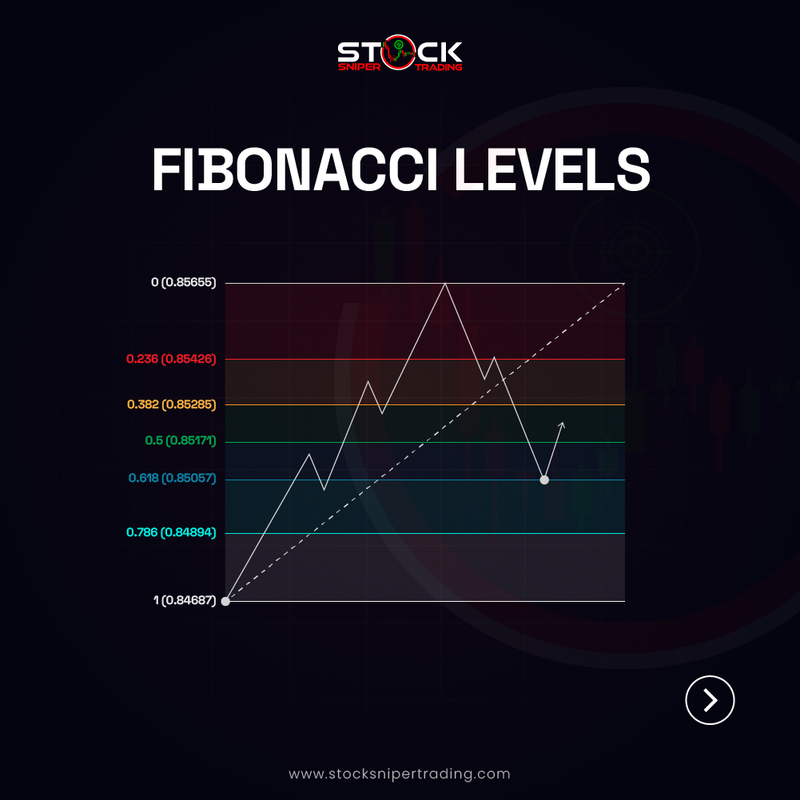
Explore the significance of Fibonacci retracement levels in trading. Learn how levels like 23.6%, 38.2%, 61.8% (the "Golden Ratio"), and others guide traders in identifying key market turning points for trend continuation.
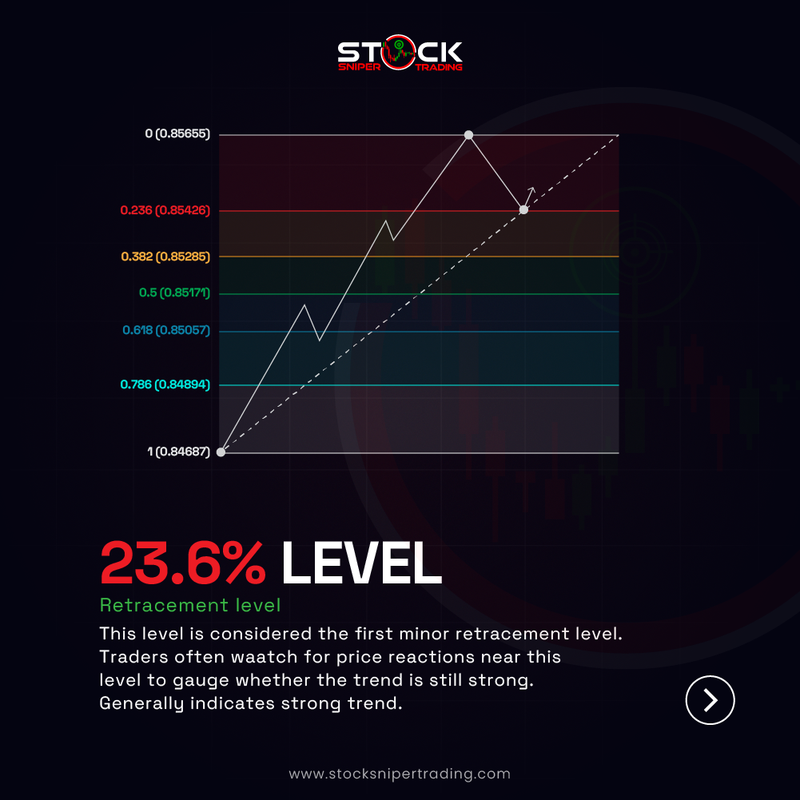
1. 23.6% Level
This initial retracement level is often watched for early signs of price reactions. Traders use it to gauge the strength of a prevailing trend, with reactions here suggesting the trend's momentum is still robust.
- - Used for early trend analysis.
- - Indicates strong trend momentum.
- - Often a minor retracement level with quick reversals.
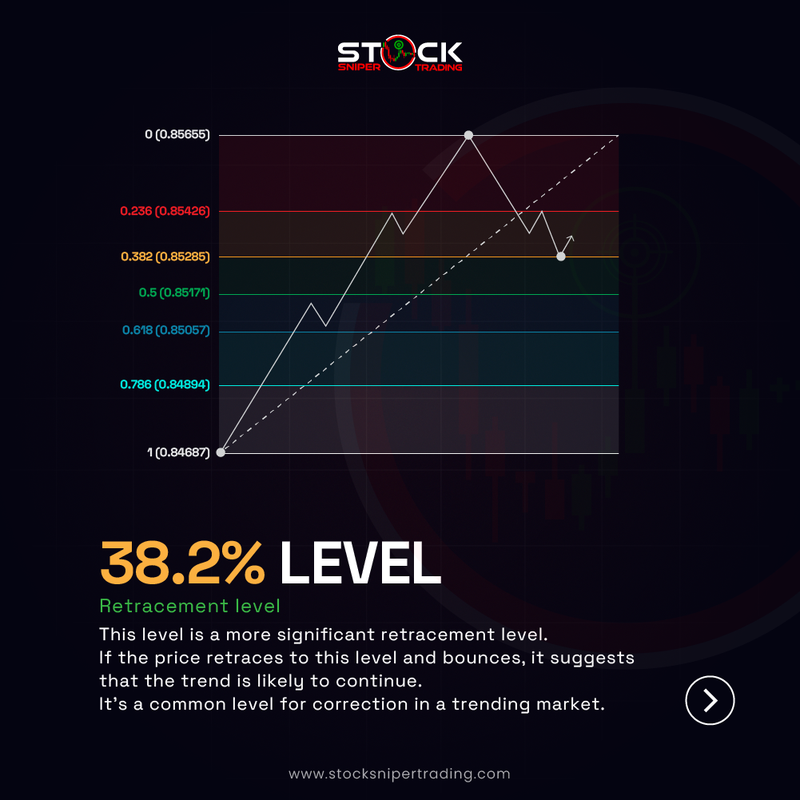
2. 38.2% Level
A more meaningful retracement point, the 38.2% level often signals the potential continuation of a trend after a correction. Price bounces from this level suggest the trend's likely persistence, making it a common correction zone.
- - Significant for identifying trend continuations.
- - A common correction points in trending markets.
- - Price reversals here suggest trend strength.
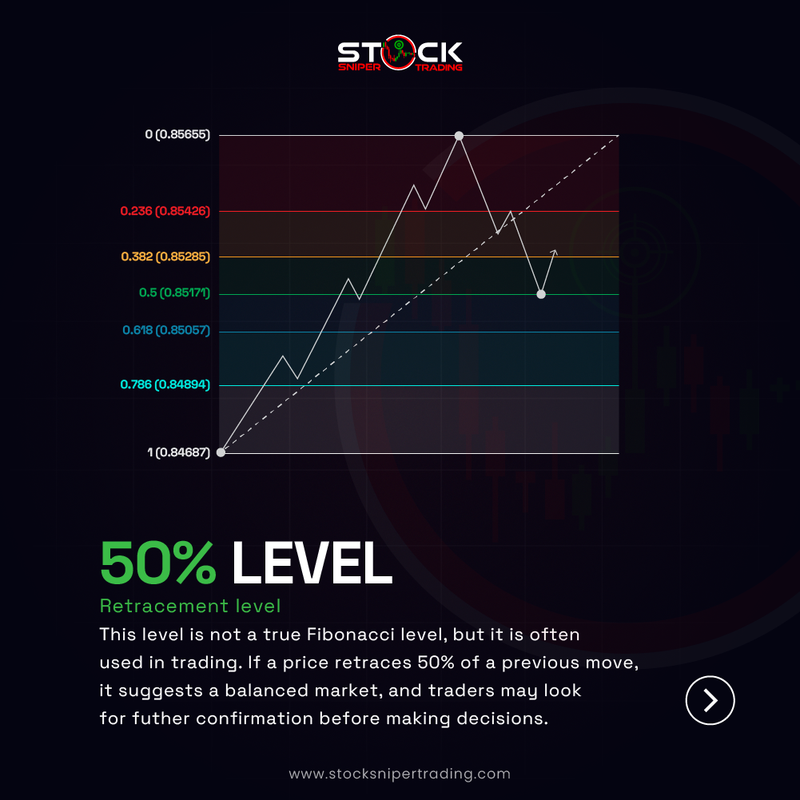
3. 50% Level
Although not a Fibonacci number, the 50% level is popular in trading. A retracement to this level is seen as a balancing point, prompting traders to seek further confirmation before deciding on subsequent market moves.
- - Though not a Fibonacci number, widely observed.
- - Balance point in the market, signaling potential stabilizations.
- - Requires further confirmation before trading decisions.
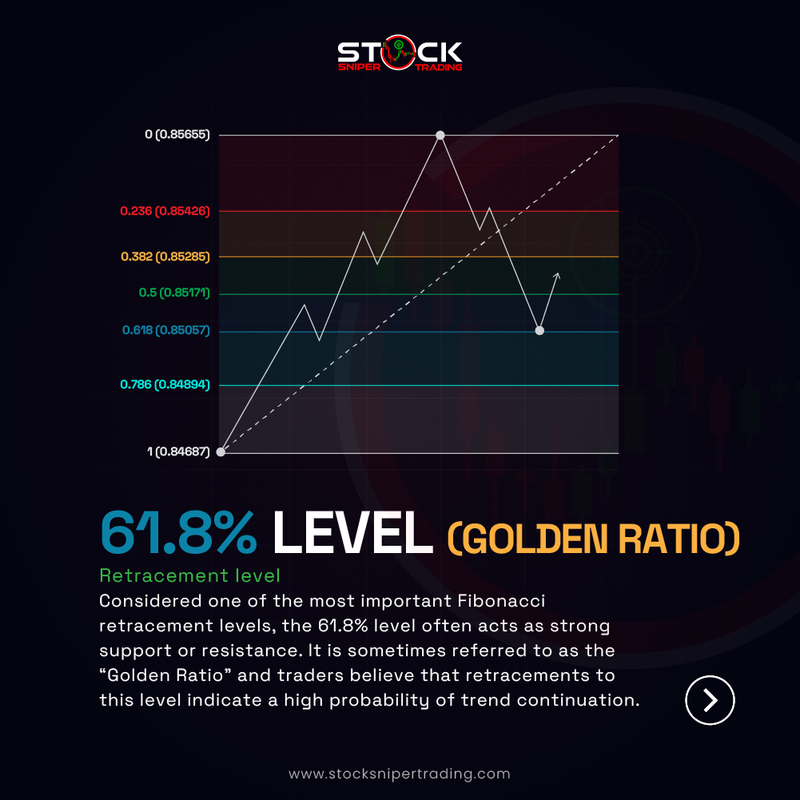
4. 61.8% Level (Golden Ratio)
Highly significant, this level is known as the "Golden Ratio." It frequently acts as a key support or resistance point. Traders closely watch retracements here for high-probability, trend-continuation signals.
- - Known as the "Golden Ratio" for its importance.
- - Acts as strong support/resistance.
- - Indicates a high likelihood of trend continuation.
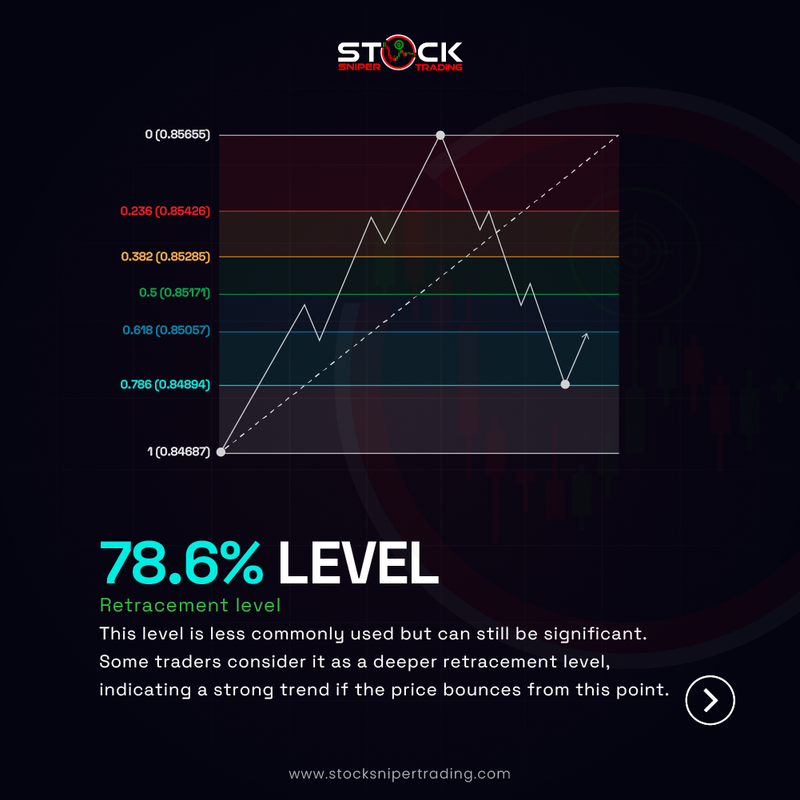
5. 78.6% Level
While less frequently used, the 78.6% level is important for spotting deeper retracements. Traders view bounces from this level as indicative of strong trend resilience and potential continuation.
- - Less frequently used but significant for deeper retracements.
- - Bounces from this level suggest trend resilience.
- - Viewed as a stronger correction point before trend continuation.
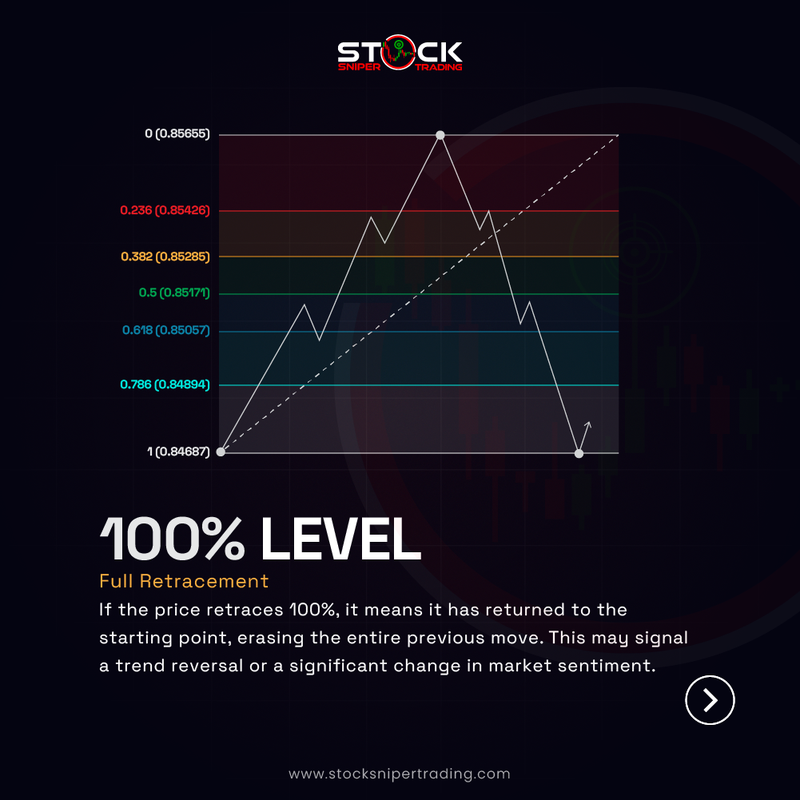
6. 100% Level
If the price retraces 100%, it means it has returned to the starting point, erasing the entire previous move. This may signal a trend reversal or a significant change in market sentiment.
- - Represents a full retracement to the trend's origin.
- - Indicates a totally erased previous movement.
- - May signal a potential trend reversal or a major shift in market sentiment.
- - Calls for careful analysis to determine the next market direction.
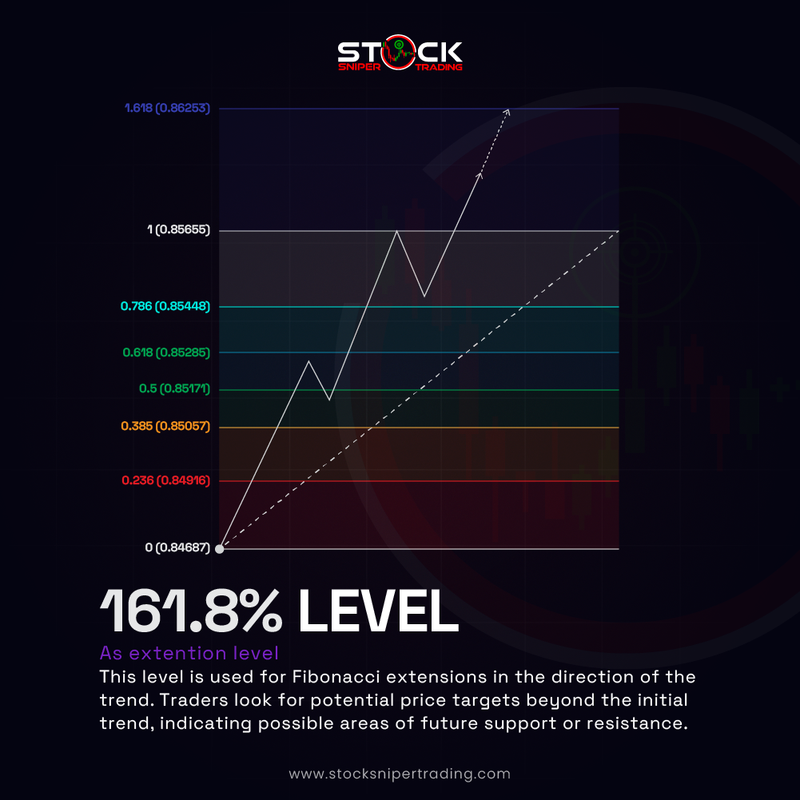
7. 161.8% Level
This level is used for Fibonacci extensions in the direction of the trend. Traders look for potential price targets beyond the initial trend, indicating possible areas of future support or resistance.
- - Used as a Fibonacci extension rather than a retracement.
- - Helpful in identifying potential price targets beyond the initial trend.
- - Indicates areas where future support or resistance might develop.
- - Assists in setting profit-taking objectives in continuation trends.
These points emphasize the utility of the 100% and 161.8% levels in detecting potential market shifts and extensions beyond standard retracement levels.

